Year: 1993
Directed by: Albert Pyun
Written by: Rebecca Charles
IMDB Reference
Degree of Cyberpunk Visuals: Medium
Correlation to Cyberpunk Themes: Medium
Key Cast Members:
- Alex: Olivier Gruner
- Farnsworth: Tim Thomerson
- Angie-Liv: Cary-Hiroyuki Tagawa

~86.5% is still human~
Overview: Surprise surprise - another movie with Gruner playing a cyborg - this time by Martial Arts cyborg master, Albert Pyun. Like Gruner’s performance in Automatic (1994), Nemesis is also a decent “B” cyberpunk flick. In Nemesis, Gruner does his Robocop impersonation while trying to fight bad guys in the year 2027. In a well done style over substance movie, we get a nice underground war between cyborgs and humans. Throw in a good bit of Escape from New York and Blade Runner knock-off visuals and you have yourself an evening of trashy fun! Again, nothing new here, but the action is actually done well enough that you might want to give it a watch if you’re hankerin for mindless but fun Robocop knockoffs.
Year: 1988
Directed by: Kazuyoshi Katayama
Written by: Kazuyoshi Katayama, Masamune Shirow (manga)
IMDB Reference
Degree of Cyberpunk Visuals: Medium
Correlation to Cyberpunk Themes: High
Key Cast Members:
- Deunan: Masako Katsuki
- Briareos: Yoshisada Sakaguchi
Rating: 7 out of 10
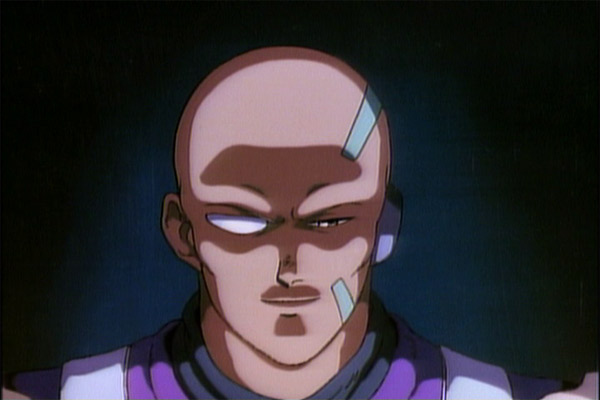
Overview: Released the same year as Akira, this Masamune Shirow story is far more an artifact of 80s Anime, whereas Akira points the way to how anime will look in the 90s. This early Mecha movie is violent, profanity laden and action packed, with a really nice story and interesting philosophical undertones. And interestingly, this is one of the very few animes where the English track is actually the best one.
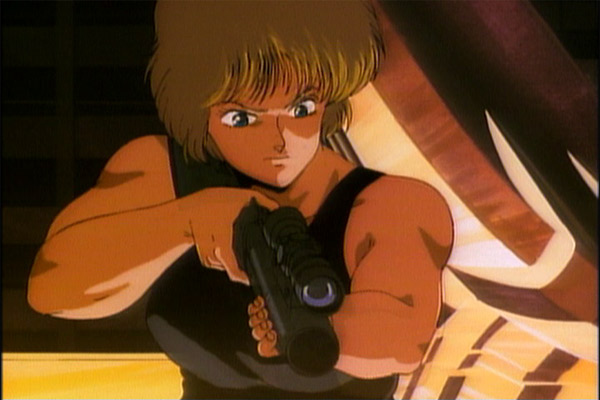
The Story: Appleseed takes place in a dystopian future, in which a city called Olympus has been engineered to be a created as a perfect refuge from the rest of the world. Many of the inhabitants have been bio-engineered “biodroids,” which are half-human, half-cyborgs designed to serve specific roles in the society. An all-powerful computer named GIA controls all city functions, and is just now starting to become responsible for the defense systems. Olympus is so controlled that there is little diversity or struggles required from its inhabitants.
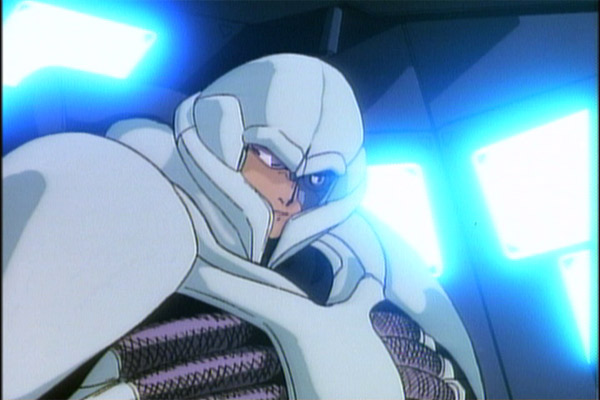
A cyborg terrorist named Sabastian has made it his mission to destroy GIA. He finds a kindred soul in a disenchanted police officer, who’s wife committed suicide after she couldn’t stand living such a controlled existence. They plot to take over the prototype impenetrable tank in order to kill Gia and destroy Olympus. The movie centers around the mecha-laden Swat police force aligning their forces to stop them. In addition to heavy violence, we get MASSIVE amounts of F-bombs dropped here. Its actually rather cool seeing the amount of profanity that is used here - far more than one would expect from an anime such as this.
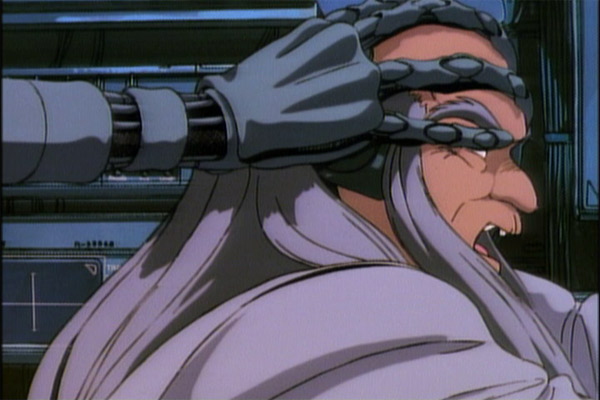
Deunan, a hot police chick and Briareos, a bug-like looking cyborg are Swat team members assigned to stop the terrorists. Incidentally, these two are clearly the precursors for Major Motoko Kusanagi and her cyborg partner, Bateau. While Deunan keeps her clothes on and doesn’t have Motoko’s intelligence, she definitely fills the same roll. Spunkiness is her middle name. The rest of the group, including Sebastian the terrorist, and the rest of the police force all provide decent support.
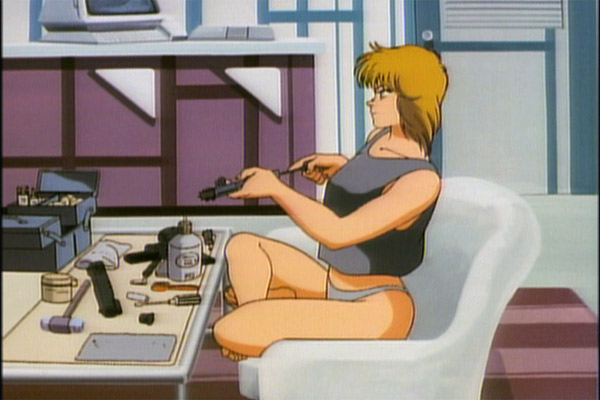
The animation here is still mostly 80s american style. Additionally, unlike the anime of the 90s, the backgrounds are often single, simple colors. While some animation scenes are rather cool, others are really more simple than you’d want. Definitely, the majority of the animation effort is about highlighing Dunan - she definitely looks better than everything else around her. Also, the sound is 80s keyboard music. Sometimes it works, but mostly its just distracting.
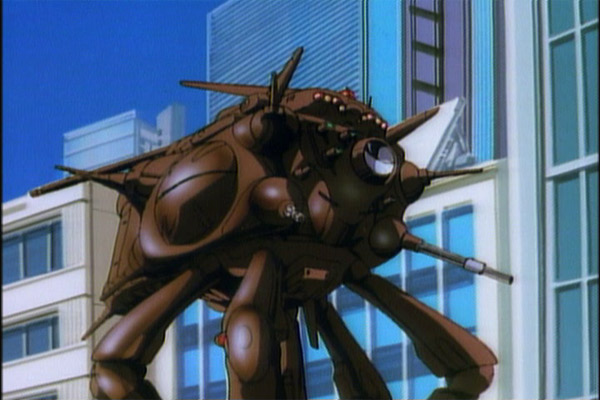
There are a number of messages that Appleseed puts forth. Looking at it today, the most disturbing message deals with Olympus’ rather extreme attempts to protect and inculcate itself from outside terrorists. The symbol for this is a bird in a cage. Considering that the US is in the throws of working this exact issue, Appleseed gives us a stark reminder that we can easily lose the soul of our society while attempting to protect it. Additionally, there are somewhat brief inquiries into what “life” is when examining whether biodroids should be valued similar to humans.
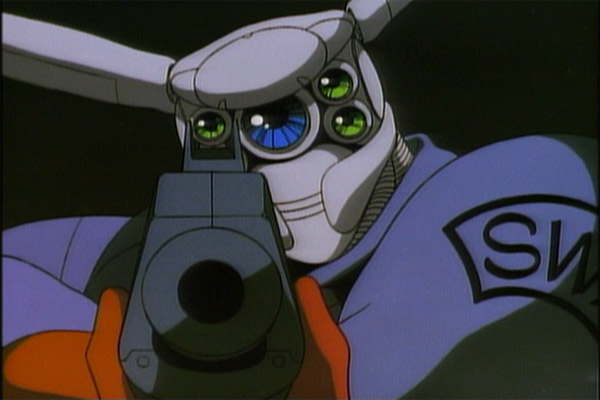
The Bottom Line: Appleseed is a good example of very early Japanese Anime. While its nowhere near the top in terms of animation, the Masamune Shirow’s story is high quality. Truly, the story is why you want to watch this. While the 2004 version definitely wins out on superior graphics, I think the 1988 version is a tighter, more interesting storyline. And if you’ve read the Applesead Manga, then the story, especially the beginning, works far better. You will find yourself becoming connected to the lead characters. But most impressive is the pacing. Appleseed packs an incredible amount of story in 68 minutes - truly, there’s very little fat here.
Year: 1994
Directed by: Hiroyuki Ochi
Written by: Akinori Endo, Chiaki Konaka
IMDB Reference
Degree of Cyberpunk Visuals: High
Correlation to Cyberpunk Themes: Very High
Key Cast Members:
Armitage: Hiroko Kasahara
Ross Sylibus: Yasunori Masutani
D’Anclaude: Ryûsei Nakao
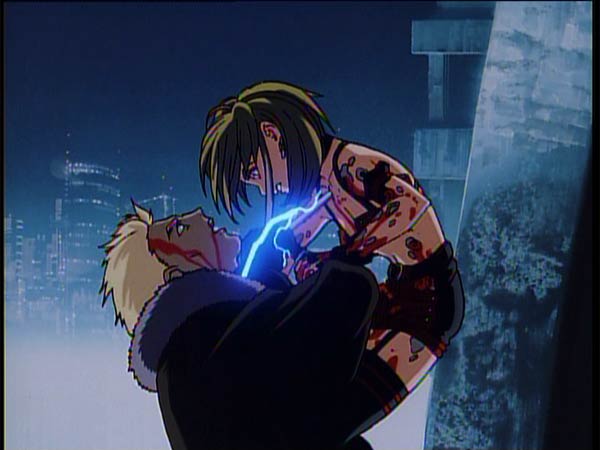
Overview: Armitage III, one of the many Chiaka Konaka written masterpieces (along with Serial Experiments Lain, Texhnolyze, Malice@Doll) is simply an awesome story. If you like Blade Runner and haven’t seen Armitage, you’re doing yourself a disservice. Most of the same issues are raised there, but are done in an original enough way that makes you absolutely love this little anime chick. Humanity as an exclusionary concept which also implies “worth” is fully explored here. Are androids still supposed to just be our servants even if they do have a sense of self-worth?
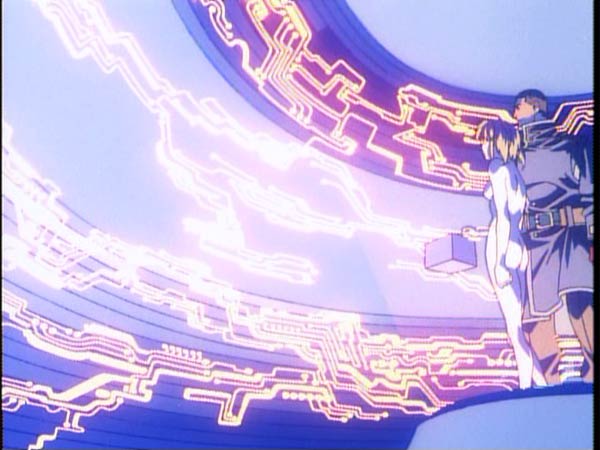
Set in a Blade Runner-like future, mostly centering on Mars, Naomi Armitage is a type III series android who works as a cop on Mars, along with her new partner, Ross Sylibus. While most of the public knows about, and barely tolerates the type II series, they are not aware that there are a few lifelike, human-acting type III series androids living among them. Unfortunately for the robots though, someone knows of their existence and is systematically killing them one by one.
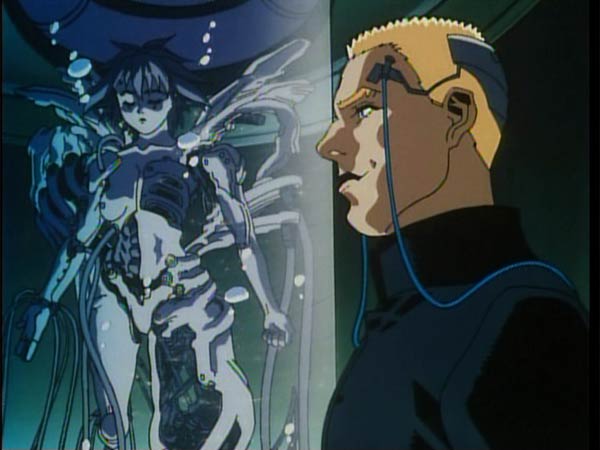
As the plot progresses, Ross, who doesn’t like robots (his former partner was killed by a cyborg) learns that Armitage is an android. Even worse, they learn that the murderer is a series IV robot. Armitage, who starts off as a wise-cracking, disrespectful cop who dresses in sleazy clothes starts to question her “humanity” such as it is. In addition to realizing she’s one of the very few left, Armitage wonders why she was ever created. As she struggles to maintain “sanity,” Ross begin to develop a closer relationship - one that is not too mushy, and works well with the pacing.
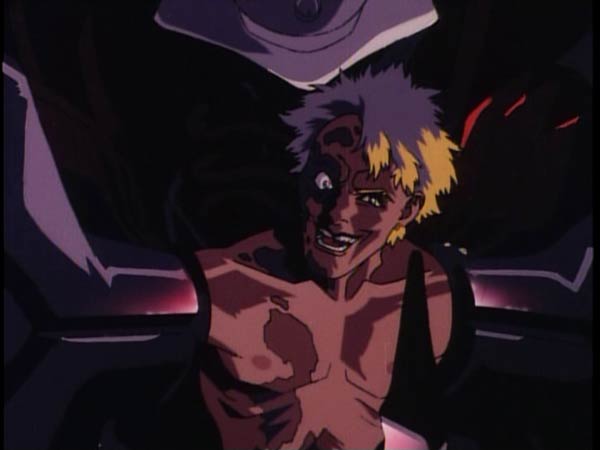
Armitage eventually broadens into a large-scale conflict that involves greedy corporations, inter-galactic disputes, android’s rights, population issues, and all the rest. We get LOTS of gun fights in this, and even a full scale battle, mecha style. In addition to being cute and vulnerable as an android wondering if she has a purpose in life, Armitage also kicks major ass in her burgundy leather ensemble. Guts, martial arts and all sorts of other gadgets come flying out of this chick. She is definitely, tough, strong willed, and lots of fun to watch.
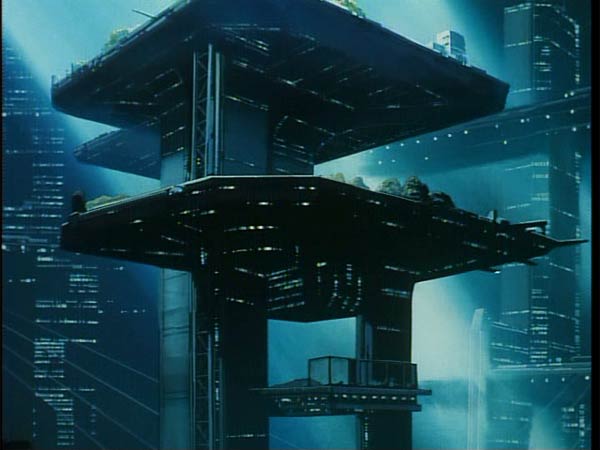
Notice the incredible similarity to another futuristic building in Metropolis.
The story is one of the most compelling in cyberpunk anime and really makes you feel for Armitage. Yes, the whole questioning of humanity by an android has been done before (and since) and since, but Armitage is definitely one of the better ones at this. Within the confines of a murder investigation, Armitage’s “soul” is exposed in her search for larger meaning and purpose, all while her fledgling relationship with a cyborg-hating policeman begins to emerge. Interesting questions are posed such as, what happens if an android has a fatal flaw? Should we throw them away is if they are they truly nothing more than a toaster? This is in essence a mirror to questioning how we deal with handicapped people in human society. We still consider handicapped people valuable and contributing members to society, but would we do the same with disabled Androids? At what point do they become real as opposed to simply remaining property - a tool for humanity?

The Bottom Line: The visuals and sounds in Armitage III, while good, are somewhat dated and inconsistent. Some shots are absolutely superb, while others have a relatively plain background and almost 80s looking characters. Overall, there’s enough there to keep your interest, but its the story that delivers. Truly, I absolutely LOVE it!
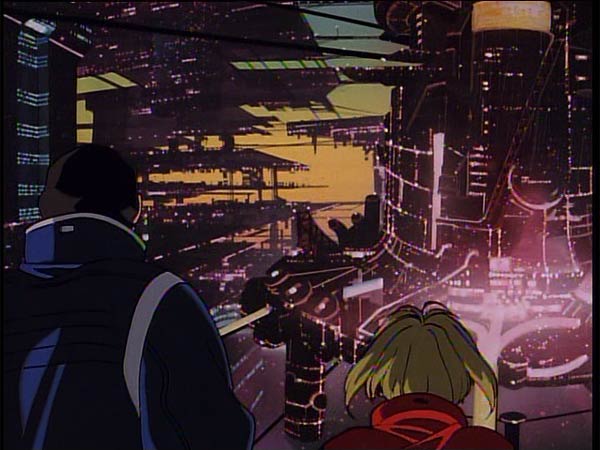
What is Armitage III Polymatrix? Polymatrix is a movie extracted from the 4 OAVs in Armitage III. While it is missing a few interesting scenes, its still watchable. It also has Kieffer Sutherland and Elizabeth Berkley as voice actors here, so if you can’t stand subtitles (You really fix this problem in the long run though), Polymatrix is a reasonable substitute. Some truly hate it primarily due to the English dubbing, the missing scenes and the changed ending. For me, I was OK with the dubbing, was generally OK with the scenes missing, but I liked the ending in the OAV (this movie) better.
~See movies similar to this one~
Movie Review By: SFAM
Year: 2001
Directed by: Jason Wen
Written by: Howard & Jason Wen
IMDB Reference
Length: 13 minutes
Degree of Cyberpunk Visuals: High
Correlation to Cyberpunk Themes: High
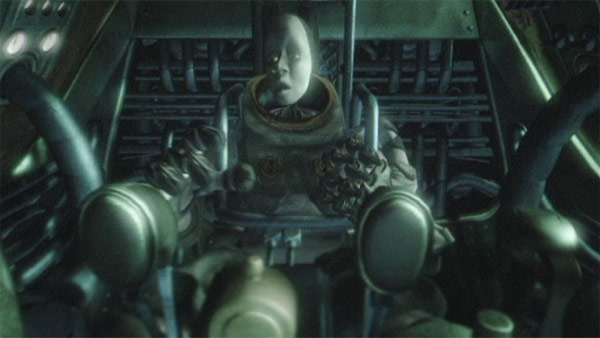
Overview: f8 is a truly wonderful 13 minute film short that captures almost all the key elements of cyberpunk without using any dialogue! f8 was well received in many of the 2001 best animated film short awards (including the Hollywood Film Festival, the Jury Award, and others). The 3D graphics, while not as high quality as might be found in a large budget movie, are more than adequate. Wen’s selection of viewpoints, lighting decisions, movement and shadows are able to emphasize the best qualities of the 3D animation.
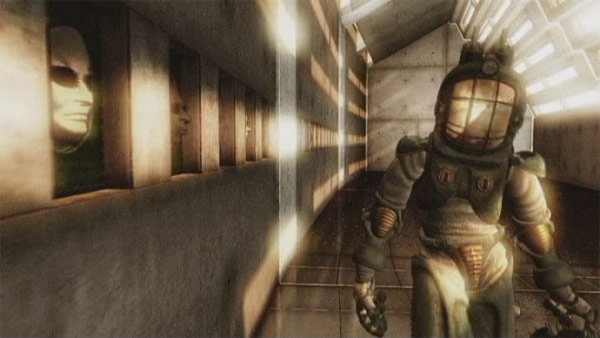
f8 centers on a nameless lead character in a strange futuristic society who wants to gain individuality. He lives in an oppressive, metropolis-like controlling society, where your fate and role is predetermined. But an underground has developed where individuality appears to be the key for admission. The plot follows the plight of our protagonist who attempts to steal a “face,” and thus, will have the ability to express an individual personality.
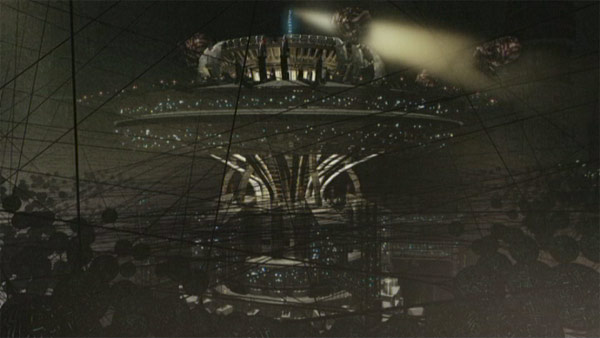
Unfortunately I cannot divulge too much more of the plot for fear of spoiling it. You can get this movie at Best Buy for about 10 bucks - even though its only 13 minutes, I think its worth it. You get 5 commentaries, and truly, the story is interesting enough that you’ll watch it more than a few times. But instead of a plot, here’s some more screen captures of it - these should give you an idea of f8’s visual splendor. Like many cyberpunk films, one color tends to dominate f8 - in this case, yellow is the predominate color.
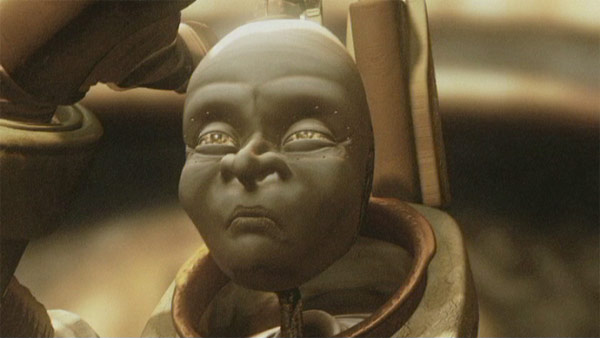
The faces are quite striking in f8 - more so even when you finally get to see their bodies!
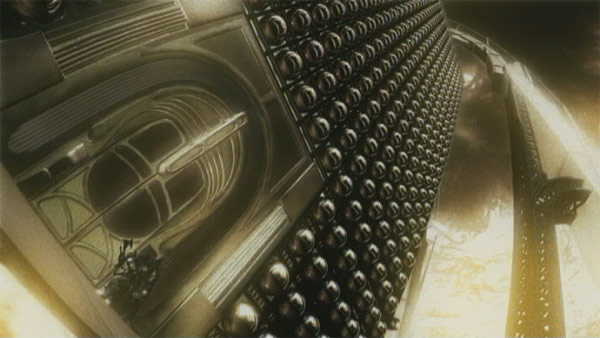
Talk about a Noirish looking building! This has all sorts of high tech, ominous vibes…
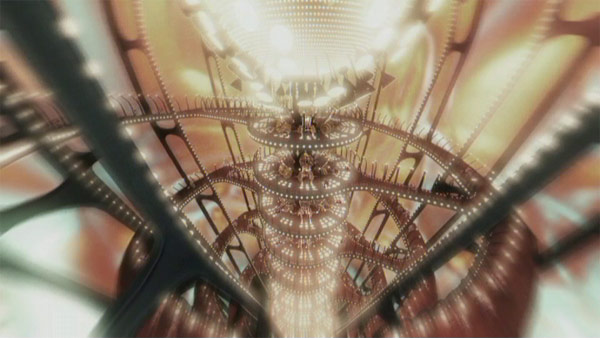
f8 has some fantastic visuals for a 13 minute film short.
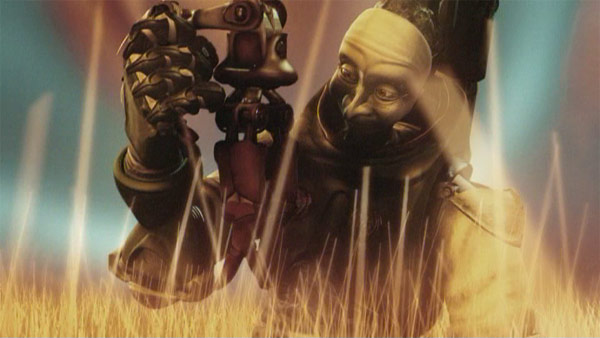
For some reason, this scene really reminds my of the scene in Nausicaä where she is walking through the field of gold tentacles.
~See movies similar to this one~
Year: 1995
Directed by: Mamoru Oshii
Written by: Kazunori Itô, Shirow Masamune (Manga)
IMDB Reference
Degree of Cyberpunk Visuals: Very High
Correlation to Cyberpunk Themes: Very High
Key Cast Members:
Major Motoko Kusanagi: Atsuko Tanaka
Batô: Akio Ôtsuka
Section 9 Department Chief Aramaki: Tamio Ôki
Togusa: Kôichi Yamadera
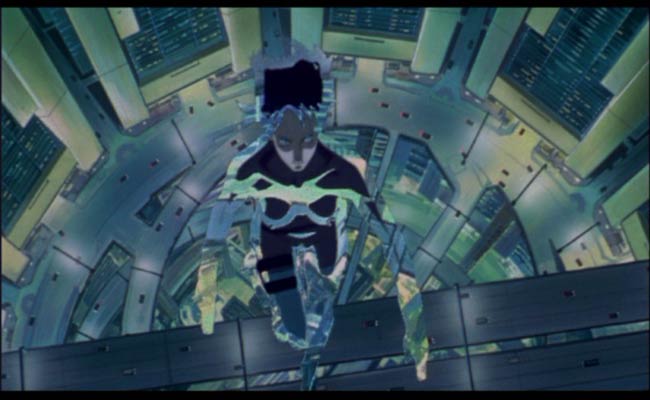
And where does the newborn go from here…the net is vast and infinite…
Overview: After Akira, a case can be made for Ghost in the Shell being the most influential anime ever. While Akira was the first anime to crack international markets, GITS rose anime to something “real,”, and opened the doors for events like Disney’s pursuit of Miyazaki, and eventually, the truly incredibly pace of anime we see today. More important for cyberpunk films, GITS provided a myriad of thoughts and visuals that have been expanded upon in virtually all subsequent cyberpunk animes. James Cameron refers to GITS as the first truly adult animation film to reach a level of literary and visual excellence.” In addition to a wonderfully complex and introspective story, we get heart-thumping, realistic action, all served up with some incredibly revolutionary animation techniques that places GITS on a juicy platter for all to enjoy.
~ Fair warning - there are a few plot spoilers below in the matrix discussion - I simply couldn’t write this, especially with linkages to the Matrix without including an interpretation of the ending of GITS. ~
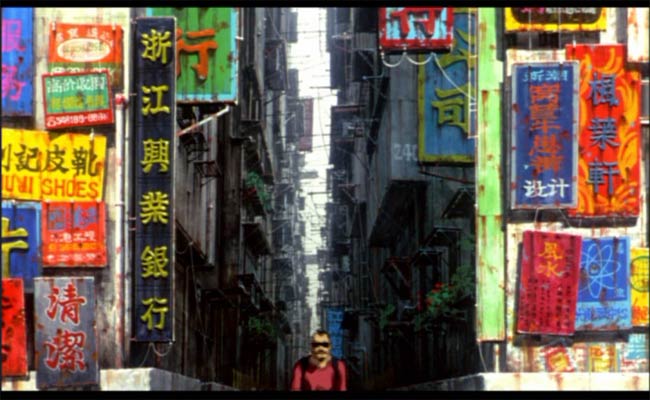
GITS shows us a very realistic looking near future set in the year 2029. The visuals are intricately detailed and depict grunge settings next to the highly sanitized corporate world. In 2029, people have the ability to augment their bodies with cybernetic replacement parts. In some cases, people have almost fully replaced their human bodies, leaving only their brain encased in a cyborg shell. The brain is even augmented with hyper-intelligent access to knowledge and communication packages. But the person, and we use that term loosely now, still has a ghost, or soul if you will - an emergent property of life that separates a human from a robot. Even though the majority of their human material is replaced with a cyborg-like shell, if the individual retains their ghost, they still retain their personality and individuality - their humanity if you will.
This cyborg shell is not the same as a robot. The limbs and body still communicate with the brain in a digital nervous-system-like operation. If we include Masume Shirow’s vision (the writer for GITS), the cyborg’s sexual parts are even fully functional. This means that in essence, their cyborg shell aids in the creation of an individual’s ghost. While this is terrific, a downside is the ability for evil-doers to engage in Ghosthacking - or the taking over of someone’s perceptual control, or worse, augmenting their artificially enhanced memory.
The story centers on Major Motoko Kusanagi, an almost fully mechanically enhanced cyborg secret operative working for Section 9 - Japan’s anti-terrorism division. As the movie progresses Motoko and her cyborg partner, Batau start to uncover a plot involving another ministry that seems to be engaged in a cover-up. Eventually, we find that this cover-up involves a seemingly nefarious hacker named the Puppet Master. In pursuing the Puppet Master, Motoko finds out that all is not what it seems- that in fact the Puppet Master is a sentient program, and never had a body. More interesting, the Puppet Master has been looking for Motoko!
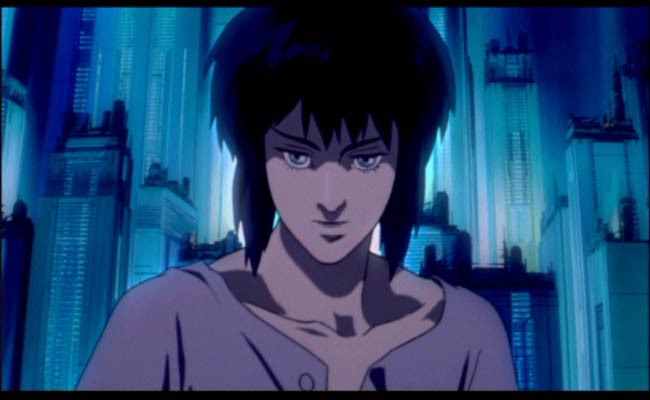
Revolutionizing Anime: Oshii revolutionized animation in GITS with a myriad of new and innovative computer graphics techniques. In short, Oshii pushed the boundaries for state-of-the art animation with GITS. Oshi scanned his animation cells in to a digital system so that he could import them into an editing suite to get all sorts of cool lens effects. For instance, in the above pic, Oshii is able to emulate a contra-pull type effect where the camera moves back, and the lens moves forward. In viewing this, the background expands while the foreground eerily stays in the same place. This works wonderfully for Motoko’s questioning of humanity speech. And this is only one of many interesting used of digital shots. Other techniques include interesting overlays that depict either brain activity or maps, for instance.
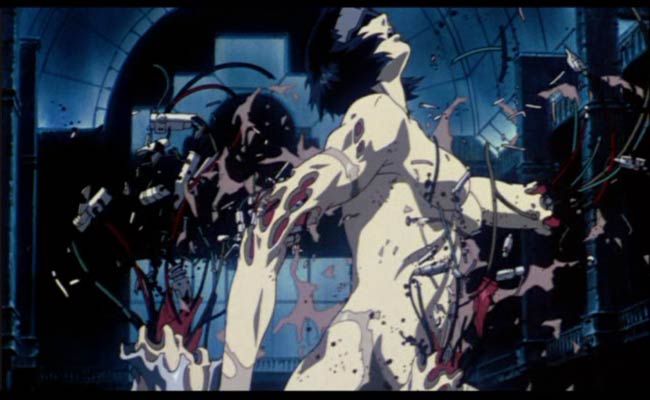
Questioning Humanity: Ghost in the Shell still provides anime’s the best examination in the questioning humanity. GITS is dominated by an ongoing discussion of what it means to be human and really, what it means to be alive. Is Motoko really still human? Even she doesn’t know the answer anymore, and actually questions whether she really has a ghost (how would she be able to differentiate a fake ghost from a real one?). This line of questioning is artfully developed in a way that makes Motoko the character in all of anime that I empathize with the most. You truly feel for the dilemma she finds herself facing.
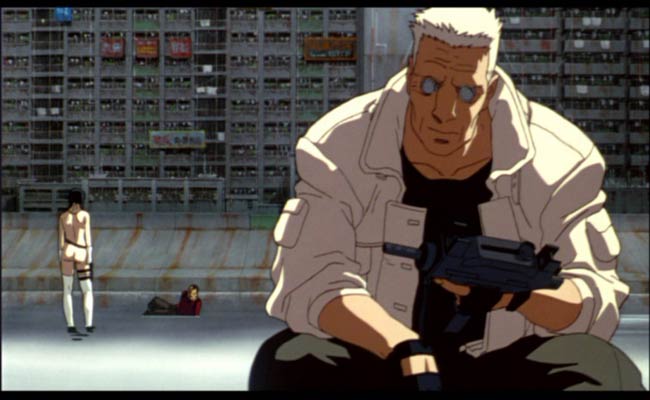
What is the Matrix? If we examine the Matrix, we find that both the visuals and storyline are heavily influenced by Ghost. There are some rather explicit visual “nods” in the first Matrix, including the opening digital sequence, Mr. Smith’s building jump where he breaks the concrete beneath him (this is virtually identical to Motoko pursuing the first puppet victim), and the shooting of the fruit stand where Neo is running near the end. On top of this, we have a reversal of roles in the Matrix, where Neo plays Motoko and Trinity emulates Batau. And again, the Wachowskis make no bones about where their influence came from - they, as much as anyone, have contributed to Ghost’s ever increasing popularity.
In looking at the storyline, we find even more interesting parallels. Ghost in the Shell ends with Motoko merging with the sentient program called the Puppet Master (Project 2501). This allows the Puppet Master produce a diversity of offspring that is simply not possible to do with copies alone. This has a direct parallel to the scifi view of Neo in the above review. While Ghost in the Shell 2: Innocence is the philosophical sequel to Avalon, the Matrix trilogy is just as clearly the sequel to Ghost in the Shell. Whereas GITS ends with this merging of a sentient program with a human ghost, the Matrix expands on this idea. We see Neo take the same journey, but in a very different way. He conducts this symbiotic merging over 3 movies whereas Motoko does this in a matter of minutes. We see Neo, through this merging of sentient program with a human, become the “one” - an omnipotent style being. This characterization is similar to the characterization that Batau gives of Motoko in GITS2 in his dogs and gods versus flawed humans speech.
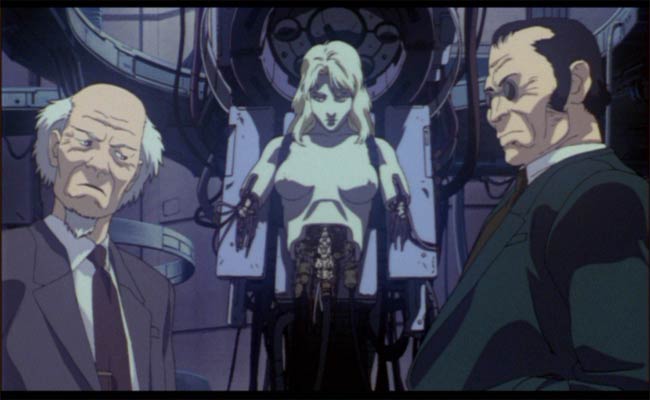
Also interesting is the linkage between the puppet master’s desire to digitally produce offspring with Neo’s reloading of the Matrix. The puppet master discusses this at the end of GITS in the “Life perpetuates itself through diversity and this includes the ability to sacrifice itself when necessary” monologue. If you trace the linkages, Neo’s reloading of the Matrix this is a method for the sentient program portion of Neo to create diversity and offspring. The merging of Neo allows the sentient program to grow and develop in ways simply not possible by itself. Familiarity with Neo’s Ghost allows it to make the changes necessary to correct the errors that build up in the current Matrix that prompt the battery people to disbelieve their surrounding.
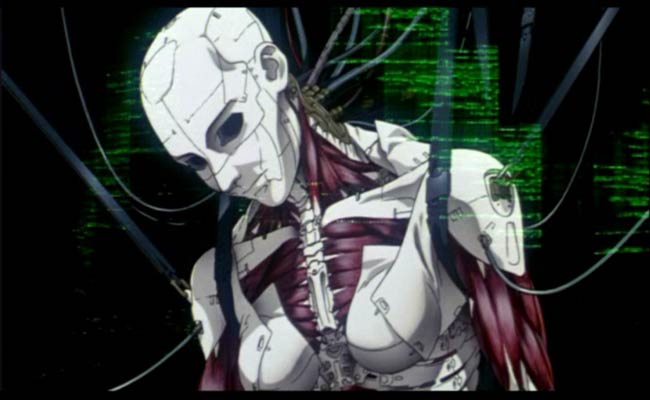
Finally, Ghost gives us a truly interesting vision of the future. We get sound astoundingly realistic and grungy cityscapes that are filled with the most impressive technological horrors. Is it truly a stretch to imagine that technology will augment our physical abilities? This is the bionic man taken to another level. On top of this, if we truly can learn to connect manufactured parts to our nervous system, is it really that far of a stretch to imagine that our brains become augmented? And over time, is it truly a stretch to believe that the line between humanity and robot won’t be blurred? GITS questions these articles of faith in such a believable way that we have seen a shift in our overall thinking on this issue.
The Bottom Line: Truly, even if you ignore all this philosophical stuff, Ghost in the Shell is simply an awesome movie! The action is terrific, the visuals are great, the soundtrack is devine…I could go on and on. If you just see one anime, Ghost in the Shell, still my favorite anime, is hands down the one to get.
Page 2: More GITS Screencaps –>>
~See movies similar to this one~
Tags: cyberpunk movie review anime ghost shell
Year: 1990
Directed by: Yoshiaki Kawajiri
Written by: Akinori Endo (writer), Jyuzo Mutsuki (story)
IMDB Reference
Degree of Cyberpunk Visuals: Medium
Correlation to Cyberpunk Themes: Medium
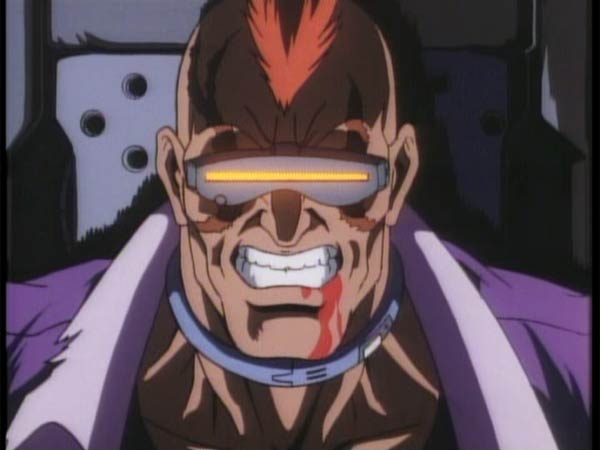
Overview: Cybercity, directed by the same guy who did the Marathon sequence in the Animatrix, is a pretty fun, but dated cyberpunk anime from 1990 that centers on 3 ultra-tough criminals who agree help the police kill the bad guys. They get these explosive collars installed (see above) and are given time limits for each mission - if they exceed the time limit - BOOM! There goes their head!
There are three stories on the DVD that I have - each centering on one of the three heroes. The stories aren’t that bad, and some of the animation is fairly decent considering the time. LOTS of shots have the US 80s cartoon look, but every now and then, you find some pretty cool cyberpunk visuals thrown in the mix. Here’s a sampling of some of the better visuals:

This guy stayed alive simply to get revenge on someone…
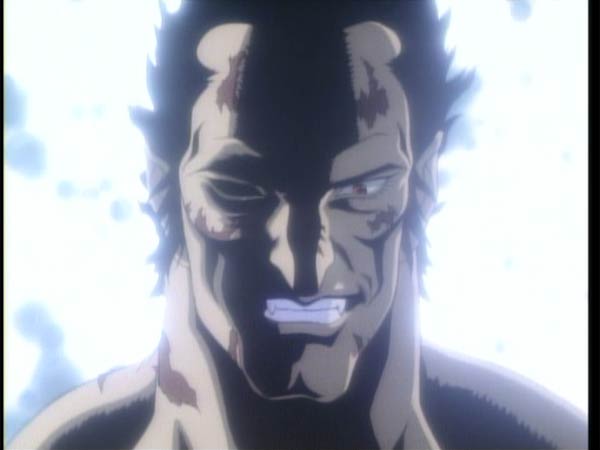
They even have a vampire villian episode!
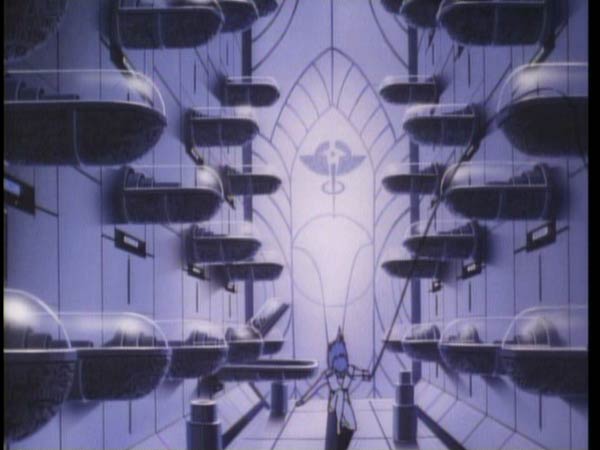
There’s an evil cat that pops out of one of these who tries to kill our transvestite hero.
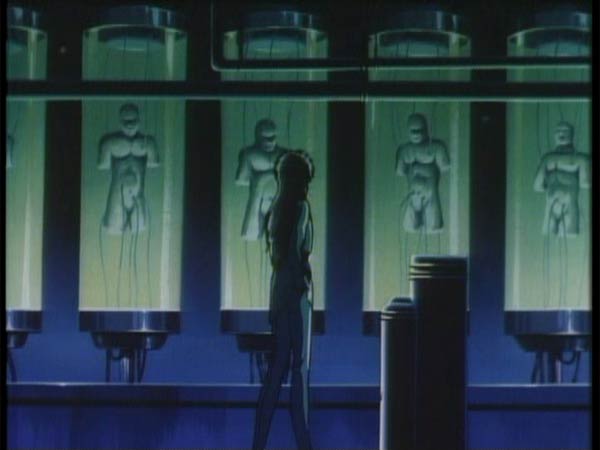
Your everyday average cyborg factory…
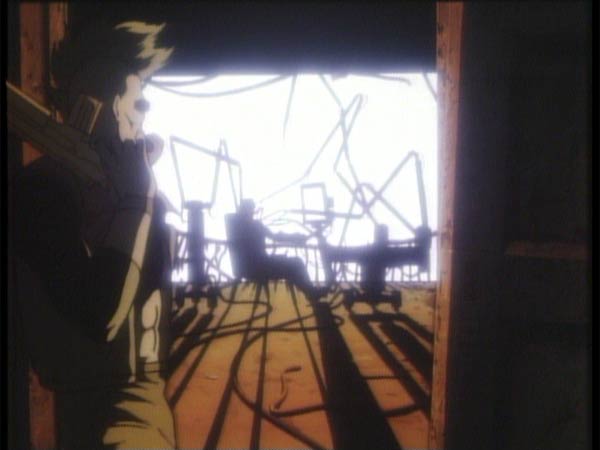
And of course, a criminal attempting to take his collar off…Good thing he wasn’t one of the main characters!
The Bottom Line: Again, nothing spectacularly breathtaking from either a visual, story, or philosophical standpoint, but this is clearly a decent low-budget attempt. Give it a try if you’ve got nothing better to watch. By the way, if someone knows where I can get the rest of the shows (assuming there were any), please let me know, as I’ve only seen the first three.
~See movies similar to this one~
Year: 1995
Directed by: Robert Longo
Written by: William Gibson (short story, screenplay)
IMDB Reference
Degree of Cyberpunk Visuals: High
Correlation to Cyberpunk Themes: Very High
Key Cast Members:
Johnny Mnemonic: Keanu Reeves
Jane: Dina Meyer
J-Bone: Ice-T
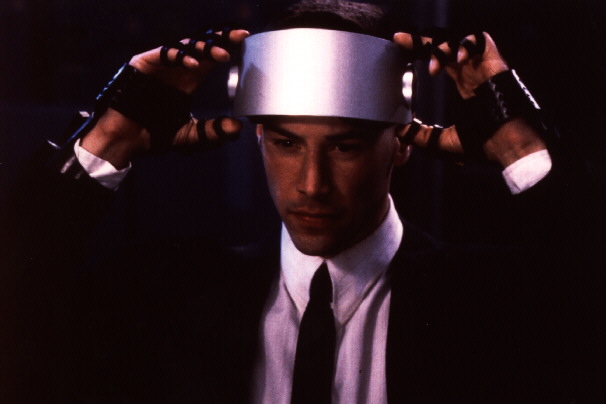
Listen. You listen to me. You see that city over there? THAT’S where I’m supposed to be. Not down here with the dogs, and the garbage, and the fucking last month’s newspapers blowing *back* and *forth*. I’ve had it with them, I’ve had it with you, I’ve had it with ALL THIS —
I WANT ROOM SERVICE!!! I want the club sandwich, I want the cold Mexican beer,
I want a $10,000-a-night hooker. I want my shirts laundered…like they do…
at the Imperial Hotel…in Tokyo.
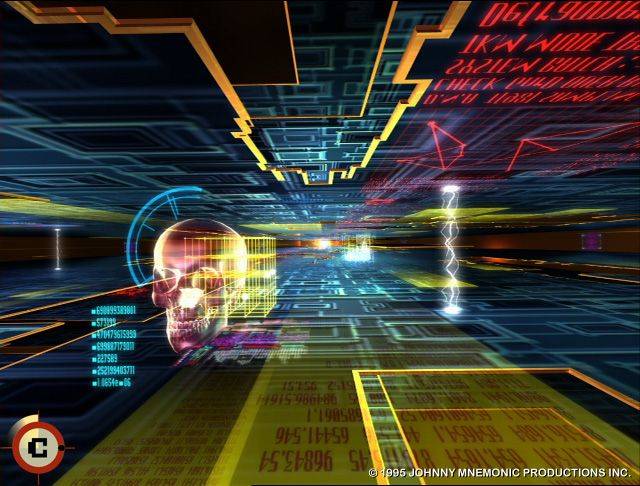
Overview: Johnny Mnemonic has always been a guilty pleasure of mine. Yes, this movie has problems, not the least of which is having a name that I can never remember how to spell, but overall, this movie is just pure cyberpunk fun! Johnny Mnemonic has a terrific mix of “punk” and “cyber” although it definitely strays to the “punk” side of things. He we have corporate domination, punk rebellion, modified humans (and dolphins!), dystopian societies and all the rest, all wrapped up in some wonderfully inspired William Gibson visuals.
Johnny (played by cyberpunk zen master, Keanu Reeves) is a data courier who deals in somewhat shady and dangerous clients in need of data getting discretely transferred to another location. He has gotten a large chunk of his long term memory removed in order to have enough space to put a massive hard drive inside his head. Unfortuantely, his space isn’t large enough for his newest high paying customer, but he still takes the assignment even though there’s danger of data seepege into the brain. During the “transfer,” all hell breaks loose, with guns and bullets flying everywhere. Johnny is forced to flee, and eventually hooks up with a damaged bodygaurd played by Dina Meyer. Together they attempt to deliver the data from China to New Jersey, but unfortunately, SERIOUS complications arise when they find out what Johnny is actually holding in his head. Ice Tea and Takeshi Kitano also have notable roles in this flick.
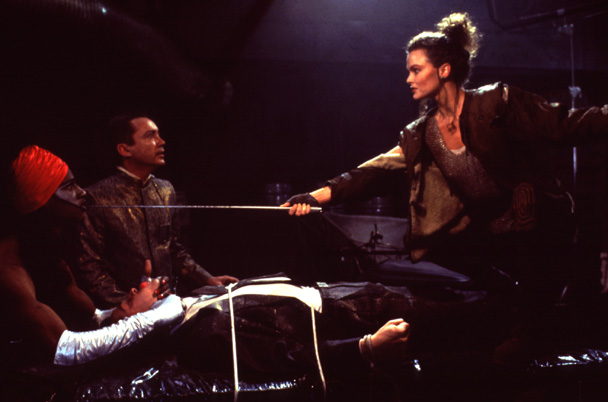
The Bottom Line: Johnny M., while mostly a scifi thriller, has some terrific lines. For anyone who’s seen this, you will remember the “I want room service” scene. I still love that! While I can’t argue that this is a great movie, I do really enjoy it. Still, it clearly could have been better. But at least this is contrasted with a few really fun scenes.
~See movies similar to this one~
Tags: cyberpunk movie review
Year: 1988
Directed by: Katsuhiro Ôtomo
Written by: Katsuhiro Ôtomo (comic), Izô Hashimoto
IMDB Reference
Degree of Cyberpunk Visuals: High
Correlation to Cyberpunk Themes: High
Key Cast Members:
Tetsuo Shima: Nozomu Sasaki (voice)
Shôtarô Kaneda: Mitsuo Iwata (voice)
Kei: Mami Koyama (voice)
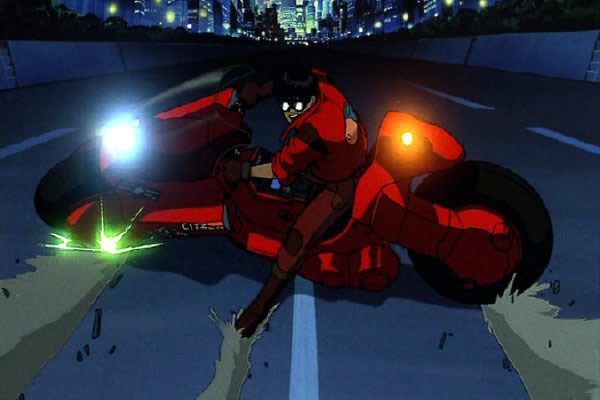
Overview: Many consider Akira to be the start of modern Japanese anime. In comparing Akira with Appleseed (also from 1988), I tend to agree. Appleseed represents high quality earlier anime, whereas Akira is truly something different both in tone and style. Akira definitely strays to the “punk” side of cyberpunk, but has full clashes with the corporate control element and technology run amok.
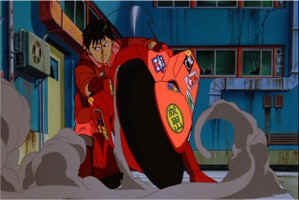 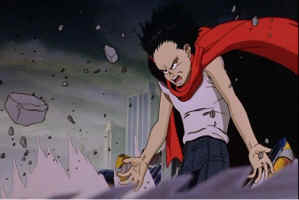
Akira’s story centers around Tetsuo, a member of a biker gang in the year 2019. Along come a group of military scientist types who look to stretch the boundaries of human capability by engaging tetsuo in experiments. Unfortunately for them, the experiments prove far too successful to the point that the develop an all-powerful monster that rages out of control.
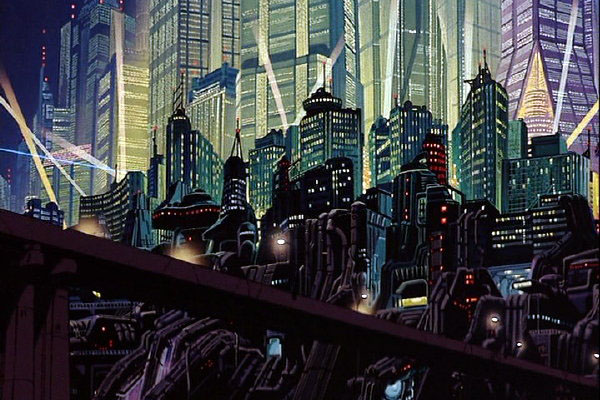
The Bottom Line: Akira has terrific adult visuals and a great sound track. As a personal preference though, I wasn’t as thrilled with the later half of the movie. Some love it, I didn’t nearly as much. There seems to be a debate where people either love this or Ghost in the Shell (guess which one I love?). It almost seemed DragonballZ-like, but again, this is also personal preference. Regardless, Akira is a true giant of anime and should be considered required watching for anyone who wants to learn more about cyberpunk or anime.
~See movies similar to this one~
Tags: cyberpunk movie review anime
Year: 2003
Directed by: Byung-chun Min
Written by: Byung-chun Min
IMDB Reference
Degree of Cyberpunk Visuals: Very High
Correlation to Cyberpunk Themes: Very High
Key Cast Members:
R: Ji-tae Yu
Ria: Rin Seo
Cyon: Jae-un Lee
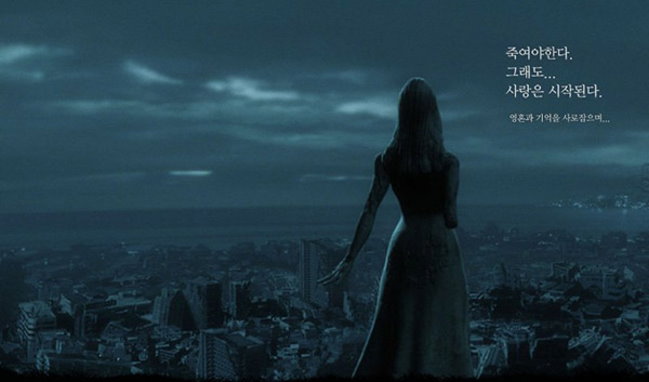
Overview: Natural City is a high priced attempt by the Korean movie industry to break into the Scifi Genre. The quality of the effects in Natural City clearly shine, both in the absolutely terrific set pieces, the painted backgrounds and the very realistic future setting. This is a cyberpunk movie to its core, with every possible aspect of cyberpunkness oozing from every pore of this movie. We get cyborgs, genetically engineered and cybernetically enhanced people, dominating corporations, theft and greed, seedy underground people and scenes, information access issues, and MASSIVE cyberpunk style. But truly, the reason Natural City rates this high is the absolutely wonderful cyborg character study in exploring issues of humanity.

The Setting: Natural City as a title is 180 degrees from what you get in a setting - nothing is real here. In this dystopian setting, genetic engineering and cyborg development have become an accepted way of life. Pretty much everyone in this city lives a miserable existence, in fact, its expected that life is pain. Vacations are taken in the equivalent of a Star Trek Holodeck type machine. The ultimate dream of everyone in this city is to become rich enough to retire to a floating hotel called Muyoga (see the picture immediately below), which advertises that it can erase your current memory and place you in a "virtual" life of your own choosing. This is extremely interesting, especially when compared to Oshii’s Avalon, in which one view of the the "ultimate" life is one where you are in a simulated reality of your own mind even though your body is a slobbering mess in the "real" world.
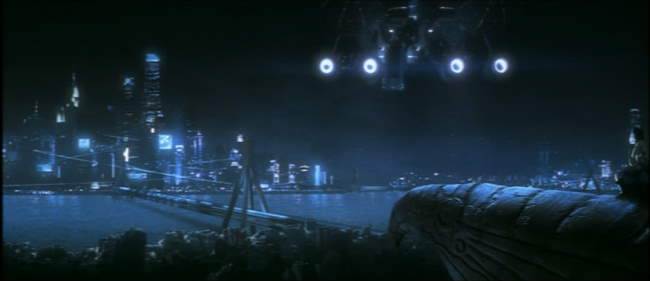
In Natural City, Cyborgs perform a myriad of societal functions - everything from entertainment and dancing, to restaurant helpers to working on the police force. To perform all these functions effectively, Cyborgs have a degree of self-awareness. This causes significant complications when their expiration date nears, as they know what it means to "expire." While some of the characteristics seem vaguely familiar to another far more famous cyberpunk movie (cyborgs with expiration dates, for instance), the story itself is radically different.
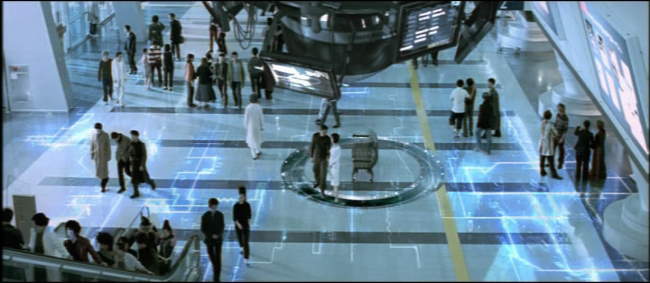
The Story: Natural City centers on the internal struggles of a highly talented cop named "R." He is tasked with finding and capturing renegade cyborgs, but ends up falling in love with a cyborg dancer named Ria who’s expiration date is only 3 days off. The movie centers on R’s compromising his principles and dealing with the cyborg underworld in a vain attempt to find a way to save his Ria. He finds a shady cyborg doctor who promises that if he finds a person with the right genetic match, he can inject part of their brain cells into Ria, which will save her. The doctor finds such a match in a street girl named Cyon.
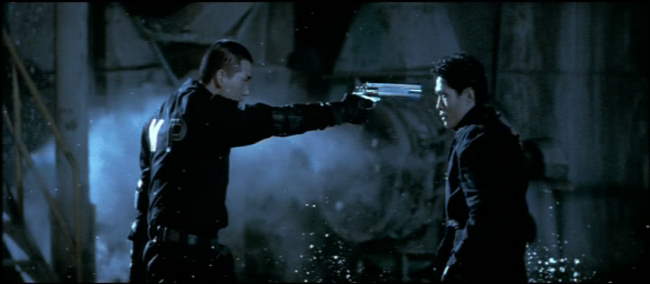
Complicating matters, R’s best friend Croy, who is also his boss and fellow police detective, has discovered his duplicity. During a raid to capture some renegade warrior cyborgs, Croy notices that R is not shooting them in the head (which kills them be wiping out their AI chip), but is instead going back later and collecting the AI chips to sell for money. Croy tracks R back to the shady doctor. Worse, one of the warrior cyborgs who escaped is also after Cyon for reasons that become all too apparent as the movie unwinds.
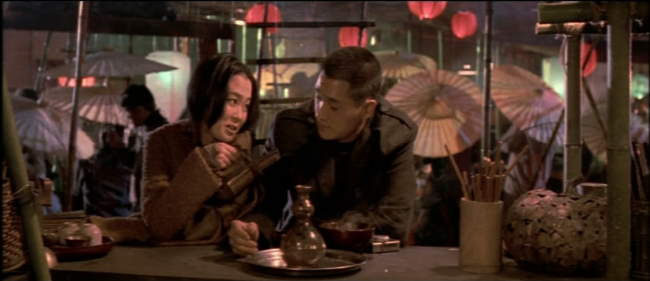
The Look: Natural City’s atmosphere is a grimy, lived-in futuristic environment. In some of the police scenes, Natural City comes across like a live-action Jin Roh movie (Jin Roh is definitely an influence for the action visuals). The high-quality and very original Scifi set pieces and occasional CG fits wonderfully, and along with the artistic backgrounds add up to a very immersive experience. The surround sound is not stunning, but is certainly decent and doesn’t detract from the experience. On top of this we get some wonderfully symbolic visuals, such as when Cyon sits atop a stone eagle statue, dreaming of life on the virtual hotel.
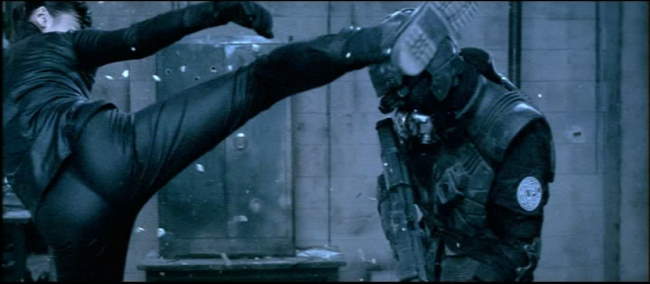
The Colors: Like most cyberpunk movies, Natural City uses one dominating color palette for the majority of the scenes. Blue is the color of choice, but varies from ultra-light to dark and dense blues. The lighter scenes usually depict high-tech human aspirations, whereas the darker scenes are left for massive action shots and for shots depicting the destruction of humanity, such as the gritty cyborg replacement lab. Every so often, we also get some really nice oranges and browns, but these colors are usually used more as chapter transitions.
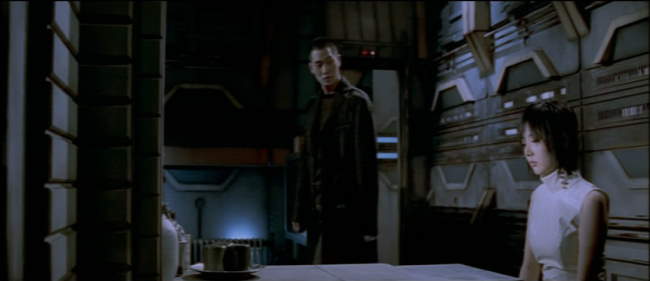
The Action: Natural City is a character exploration first, but the action and effects are on display, and in high quality. The action involves both slo-mo and high speed camera shots, along with LOTS and LOTS of blood and gore. The ending especially is somewhat of a gorefest, which is weird to see in a movie that is mostly a drama in nature. Also, near the end of the movie, we get treated to an evil, but ultra-hot cyborg warrior chick in skin tight lycra who engages in some major ass-kicking (see above for a pic of HER ass while kicking someone!). Talk about a plus! While we’re on the subject, we also get treated to some cute asian cyborg boobies at the beginning of Natural City - definitely a nice way to start the pic! (although, when you understand what the beginning boobie scene signifies it sorta takes away the fun).
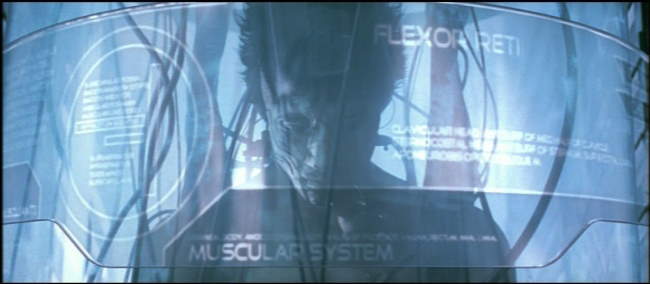
The Pacing: As I mentioned earlier, this IS a Korean movie. My wife is Korean, so I’m somewhat used to the pacing we see here. From reading a few reviews, Natural City has been panned for being way too slow and plodding in the middle. All I can say is, "Welcome to Korean Cinema." This is really a case where story telling is just different there. For a Korean, this movie is not at all slow, but has rather standard pacing, which means we get REAL in-depth and repeated scenes with the purpose of mood and detailed character study. Most important for Koreans is to be able to identify with the emotion and mood the characters are experiencing. Natural City takes the time to do this with all the main characters.
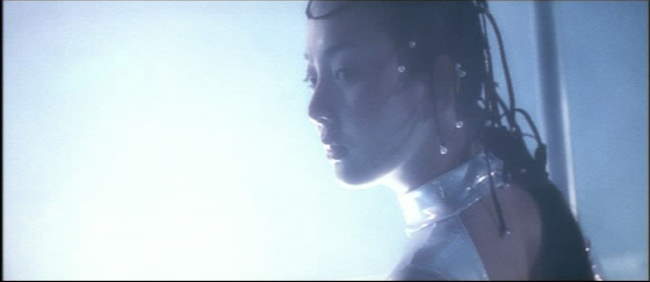
The characters really build in believability and engagement as the story progresses. At the beginning, R appears quite shallow, as does his friend and the street girl Cyon. By the end, all three, and especially Ria, his cyborg lover grow to be characters you really empathize with. The motivations for all become clear, including their virtues and flaws. The ending is also a rather "normal" Korean dramatic love story ending, which is to say, one very different from how an American film might end. Its not a feel-good movie, but then again, few Korean dramas are.

For me, the highlight of Natural City centered on Ria, the cyborg. To me, Ria captures the cyborg struggle for humanity better than any character in all cyberpunk movies save one scene (the Blade Runner’ sRoy Batty "I’ve seen things you wouldn’t believe" soliloquy, of course). While I didn’t catch this the first time through, the very beginning of the movie is told from Ria’s perspective, and then really, the last third of the movie centers on Ria (minus the action sub-plots). There are a few scenes that make it clear she "knows" what’s happening to her. She is programmed to be a dancer, but as she reaches her expiration date, she no longer can do this well. In one scene, Cyon shows her the "1 day" notice that arrives in the "Fifth Element" style mail slot. As her "time" approaches, you really do get the feeling of the Rutger Hauer speech at the end of Blade Runner, although Ria conveys this sentiment more broadly over a number of scenes and images. I want to go into this further, but this starts coming off as a spoiler, so I’ve added a more elaborative discussion of Ria’s motivations (spoilers) after the screencaps on Page 2.
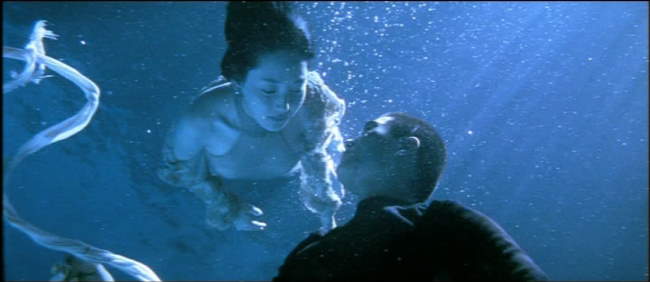
The Bottom Line: If you like cyberpunk films, the visuals alone make this a MUST SEE. If you like character studies in science fiction settings, you probably also want to see this. I truly LOVE Natural City, but be warned, the pacing is different from what you might expect. This is a Korean movie, and certainly plays like one. Also, be warned - like Wonderful Days, the ending has standard Korean Melodrama type stuff. While some might argue this doesn’t belong in the top 10, for me there’s no doubt that it does. The action and visuals are great, but Ria’s story clearly forces it there if nothing else.
Page 2: More Screen Caps and Ria’s Motivations Discussion (Spoiler)–>>
~See movies similar to this one~
Tags: cyberpunk movie review
Year: 2003
Directed by: Hiroshi Hamazaki
Written by: Chiaki Konaka
IMDB Reference
Degree of Cyberpunk Visuals: Very High
Correlation to Cyberpunk Themes: Very High
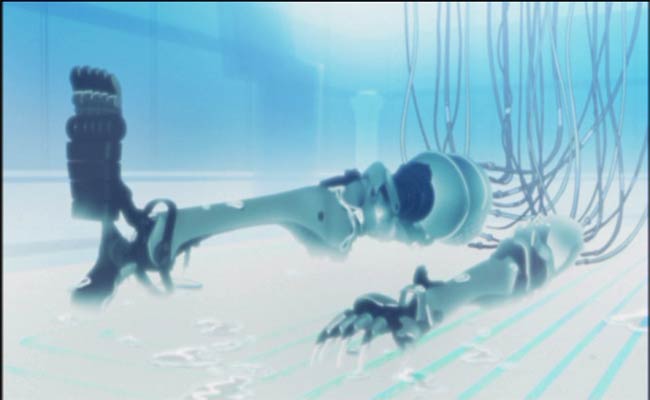
Overview: Written by one of the most prolific anime writers, Chiaki Konaka (Who also wrote Lain, Malice@Doll, Hellsing, Bubblegum Crises, etc.), Technolyze is a virtual feast of visuals wrapped up in a Lain-style fragmented cyberpunk gangster story. Like Lain, the beginning is almost non-sensical, but creates the foundation for the mood of the rest of the story.
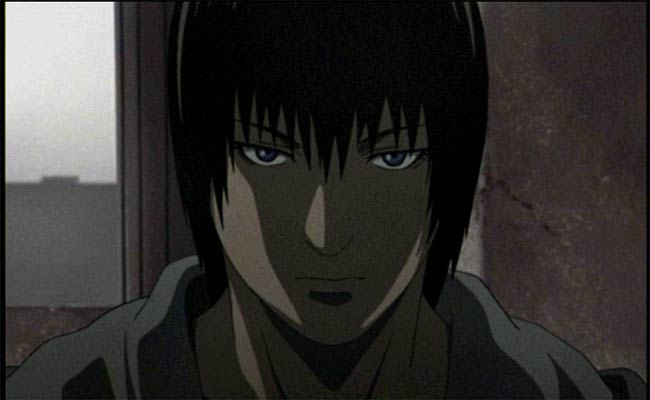
Texhnolyze is the name for the technology to make fully integrated cybernetic limbs like those above. The story follows Ichise, a former down-and-out boxer living in Luckass, a truly disturbed city with the elite rich side and the poor slums. Ichise inadvertently crosses the local mafia (called the Organo), and ends up getting an arm and leg chopped off. But luck would have it that he’s a perfect candidate for a hot chick Texhnolyze’s doctor’s experiments in the latest Texhnolyze research. Ichise carries around a capsule containing his dead mother’s body cells, which the doctor integrates into the limbs. Ichise spends many episodes figuring out how to get revenge for how he changed, but based on discussions with a girl who can see the future, his motivations change as the series moves forward.
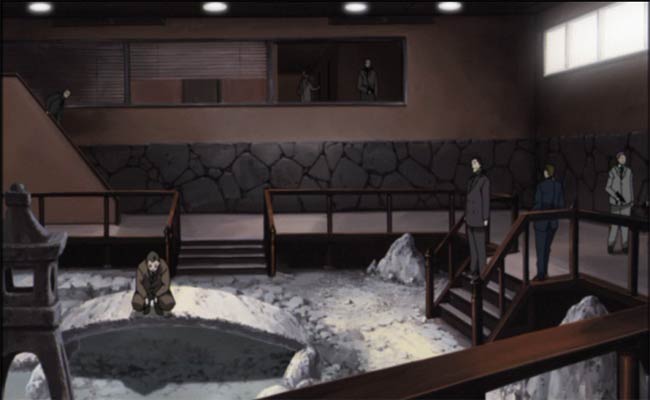
This is NOT a kids story. Every episode has LOTS of gangster-like killings. We get lots of guns and a few cool sword fights. We also get some nice Texhnolyze deaths with fists going through faces. Truly, this might be described as Goodfellas meets Serial Experiments Lain. And while I haven’t gotten the last DVD set, I’m guessing this is is NOT going to be an uplifting story.
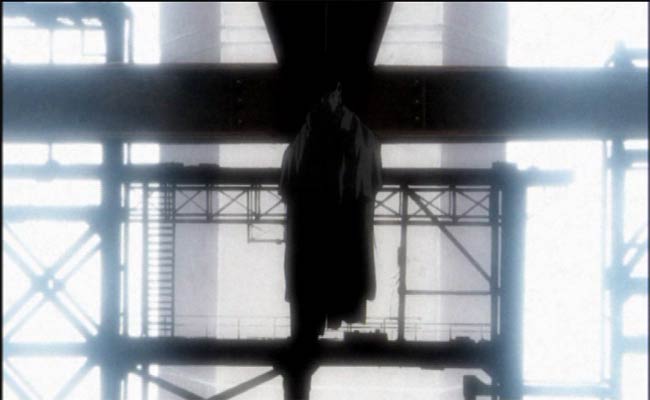
The Visuals: Unlike Lain, Texhnolyze is as Neo-noir as they come. The use of shadows is amazing. We get lots of stark white on blacks, interesting gray patterns, and lots of yellows and browns. Also, virtually every character is flawed and mysterious. While the anime is truly riveting, you won’t find yourself becoming attached to anyone. The characters simply aren’t sympathetic.

Texhnolyze is a virtual feast of visual textures and palettes. Whenever you look through a texhnolyzed person’s eyes in first person, you see almost a terminator-like display, only the screen is filled with noise. We also get the most incredibly detailed background sets. Truly, you feel like you know this city after watching a few DVDs worth of this. We also get great camera angles, with sweeping shots, extreme close-ups intermixed with psychedelic-like image merges. Top this with a terrific score and wonderful surround sound, and the WOW effect hits you in total.
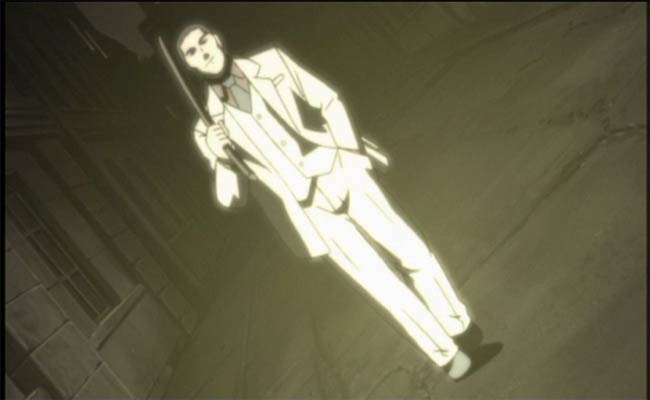
The Bottom Line: Truly, its clear that the creators of Texhnolyze wanted to make something as overtly cyberpunk as possible. They truly have succeeded. Texhnolyze is not for everyone, as the story is violent, obscure, and cold. It is however, a truly awesome and totally original cyberpunk series!
~See movies similar to this one~
Tags: cyberpunk movie review anime Texhnolyze
|
































































